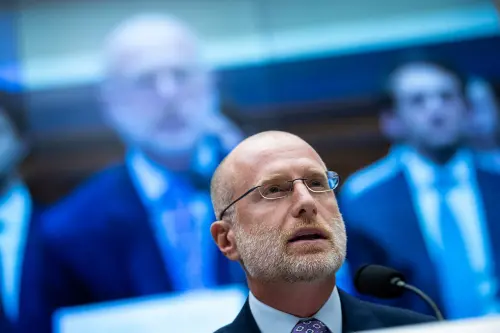While I’m pessimistic about the near-term prospects for any infrastructure package, I’m hopeful Congress will someday address the country’s infrastructure deficits. I’m also certain that the outcome then will be better if we begin debating different approaches now, enabling Congress to act more effectively when the stars align for action.
What should be the broadband agenda for such legislation? Here are some key principles.
Provide more dedicated funding to broadband. The latest White House infrastructure proposal placed some of the burden of funding broadband onto the states. As I explained when that proposal was released, institutional and political roadblocks would likely result in none of those dollars going to broadband.
Governors have internal agencies and incentives for spending federal discretionary funding on traditional infrastructure sectors like water, sewer, and roads, a point missed in the White House’s argument that money would flow to rural broadband. If we want universal connectivity, the reality is that we need dedicated funds.
Fortunately, the minimum threshold to fund broadband connectivity may be less than previously anticipated. The National Broadband Plan estimated in 2009 it would take $350 billion to deploy 100MB networks everywhere. By 2017, a similar estimate was reduced to $80 billion. The largest winner of the recent Federal Communications Commission (FCC) subsidy auction will receive $186 million to connect 66,322 locations. At about $2,800 per location, connecting the 5-10 million homes that don’t have access could be in the range of $14-28 billion, a gap Congress could fill by adding to funds the FCC already spends.
Clarify the definition of what constitutes acceptable broadband for rural areas. The current law requires the FCC to ensure that rural, high cost areas have service “reasonably comparable” to urban areas, words that lead to varying interpretations. Congress should clarify the definition with a market test. For example, it could state that “reasonably comparable” means a service level equal to what 75 percent of consumers in urban areas use.
This metric will evolve over time, but a standard would ground the target around market activity, not political preferences. It reduces the ability of institutions, like the FCC and Department of Agriculture, to favor funding for projects that protect their prior investment decisions rather than deploy capital more effectively. My experience in government suggests that an institutional “confirmation bias” is a material risk.
Clarify geographic eligibility. The current system requires mapping data that has caused confusion and game playing. After a number of complaints by, among others, Senators Jon Tester (D-Mont.) and Manchin (D-W.V.), the FCC initiated an investigation.
Eliminating incentives to game the map is tricky and any system has trade-offs. Still, I believe we would be better served by a simpler system that defined eligible areas by a clear metric, such as fewer than eight homes per linear mile. Some would object on the grounds that such a definition could result in funds flowing to areas where service is already provided. While the objection is theoretically true, the practical truth is that no provider will want to invest in an area, even with a limited government subsidy, where there is already a provider for more than a de minimus number of homes. To get geographic eligibility right, a test-bed might be warranted before adopting it everywhere.
Prioritize funds for capital expenditures. The first priority for funding should be long-term assets, such as the poles, ducts, conduit, cable, fiber, and other assets with a depreciation schedule of 30 years or longer, as well as the labor necessary to construct the network. This guarantees the funds create long-term benefits. A portion of these capital-focused funds should be dedicated to backbones that would be open to all. There are still many areas of the country in which the lack of backbones results either in no service or more expensive service.
Within this allocation, the federal government should create a deployment acceleration program that only supports enterprises that need government subsidy for network construction but not ongoing operations. As universal service expert Carol Mattey and I suggested, such funds could be allocated through a reverse auction and, by prioritizing capital support, the process would create an incentive for broadband providers to make decisions based on market forces, technology changes, and consumer preferences, rather than on political power and preferences. Further, Congress can make the program more productive by characterizing the support as a contribution to capital and not subject it to taxation as income.
Eliminate barriers to co-ops. The federal government should support what works. Unfortunately, that obvious wisdom is often ignored. One rural broadband strategy currently working involves electric co-ops stepping into the void and deploying next generation networks throughout rural areas. We should eliminate a variety of tax and other laws that discourage co-ops using their assets to offer broadband services.
Require new technologies to meet market metrics before eligibility. Should new technologies, such as satellite or fixed wireless, be eligible for subsidies? While the potential is great, a number of enterprises promising great, cheap, and universal broadband (such as Teledesic) failed to deliver. A technology should reach a minimum level of market success before becoming eligible for government subsidies, unless the FCC makes a specific finding that the risk of failure is so low that it justifies funding before reaching the benchmark.
Preempt laws that prohibit local communities from addressing local digital divides. As discussed in an earlier blog, market and technology developments all but guarantee that the digital divide will increase. As local governments are in the best position to implement targeted actions to respond to the specific needs of the local community, no state law or federal regulation should raise barriers to cities seeking to assure universal access.
There are other ideas related to broadband that ought to be evaluated. We should look at a variety of spectrum issues, with a particular focus on how to reallocate government spectrum to the private sector more efficiently, such as through a General Services Administration for spectrum.
We should also welcome more creative and cross-cutting ideas. For example, we should allow spending on a combination of networks, equipment, adoption, and utilization where the there is a good public goods case for doing so. For example, broadband represents a social and economic opportunity to transform how we deliver public goods and services, most of which are delivered at the local level. Further, cities will be one of the largest users of internet of things (IoT) networks, with McKinsey ranking cities just behind factories as the segment with the biggest IoT economic potential. As a country, we should seek to accelerate the benefits of cities using IoT to improve performance. One way to do so would be to modify the mechanism of the Race to the Top for education for connected cities. So here, the federal government could run a contest in which cities compete based on criteria relating to being based on such goals as improved performance and cost savings though using Information Communications Technology.
We should allow spending on a combination of networks, equipment, adoption, and utilization where the there is a good public goods case for doing so.
Another focus should be on market segments where there are strong and clear public benefits, such as assuring that all mothers of young children are connected. The results of the text4baby initiative, for example, show that by connecting mothers of young children to the internet, the children are more likely to enjoy improved health outcomes.
Further, we should create an Infrastructure Bank funded by repatriated tax funds (an idea former FCC Chair Reed Hundt and I proposed in a 2012 e-book) that enables funding up or down in light of economic data.
The current prospects for an infrastructure bill are not strong. Nonetheless, we should analyze and debate these ideas as if we actually were going to have to decide tomorrow because that day may arrive sooner than we think.
The Brookings Institution is committed to quality, independence, and impact.
We are supported by a diverse array of funders. In line with our values and policies, each Brookings publication represents the sole views of its author(s).






Commentary
A broadband agenda for the (eventual) infrastructure bill
March 19, 2019